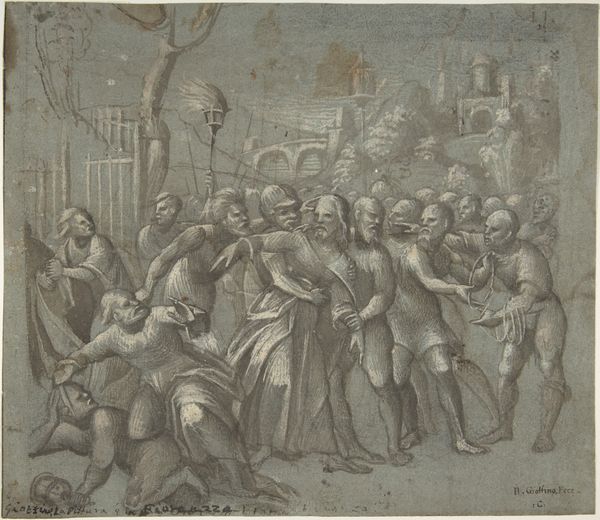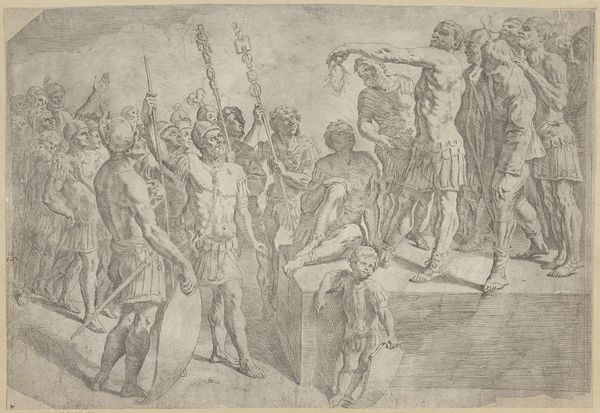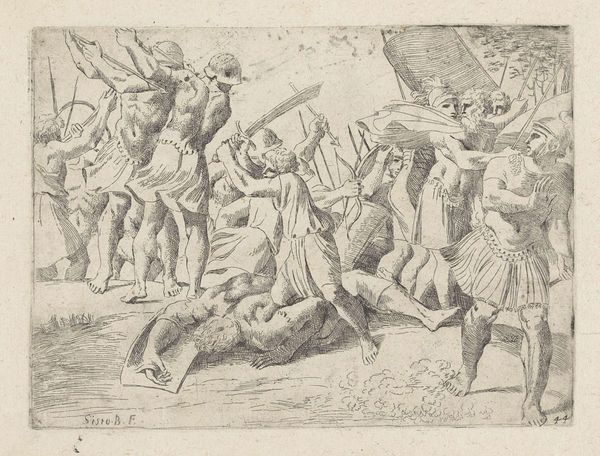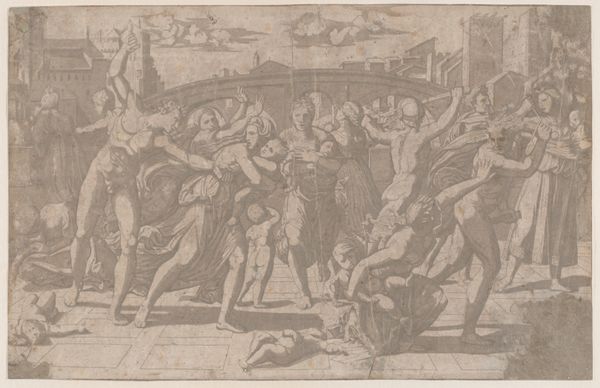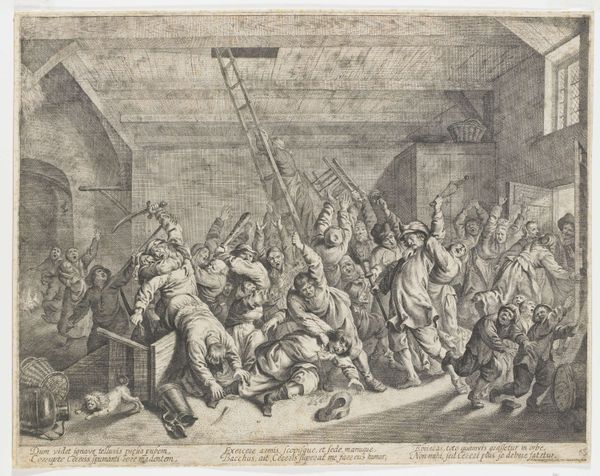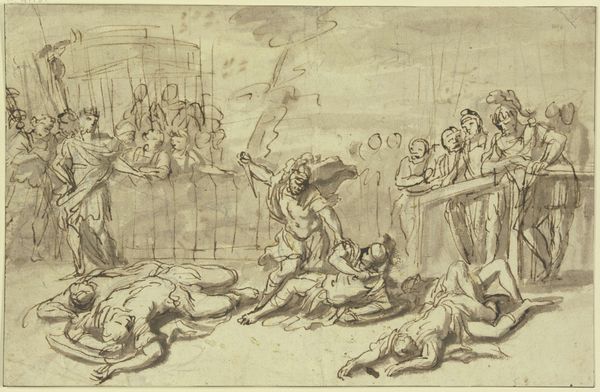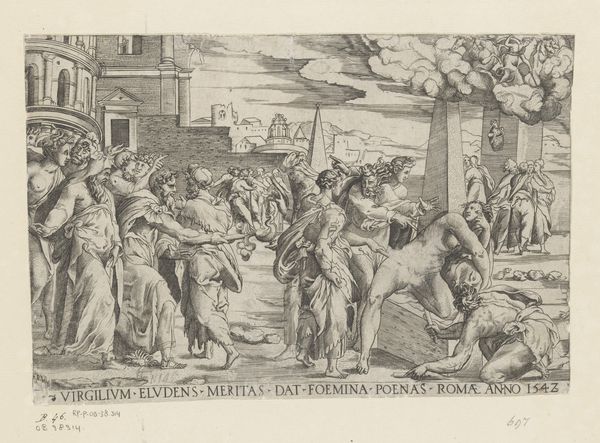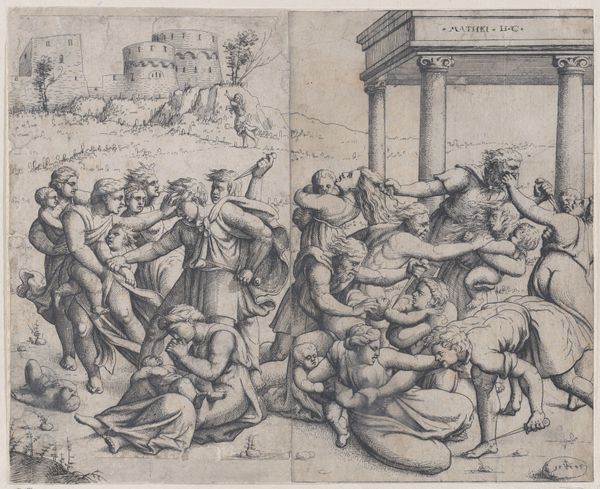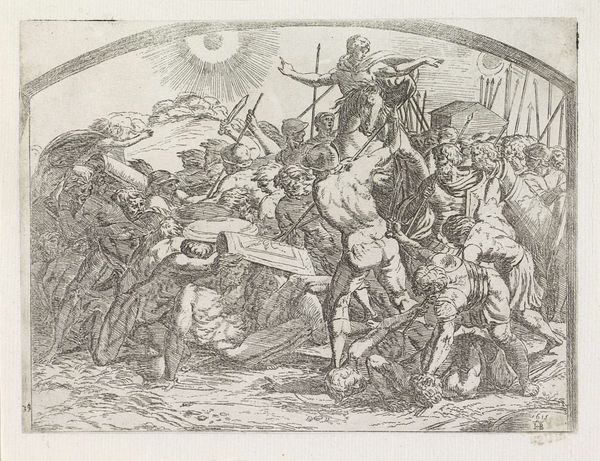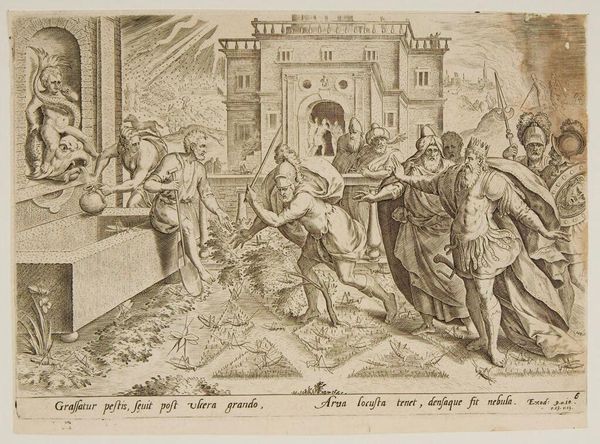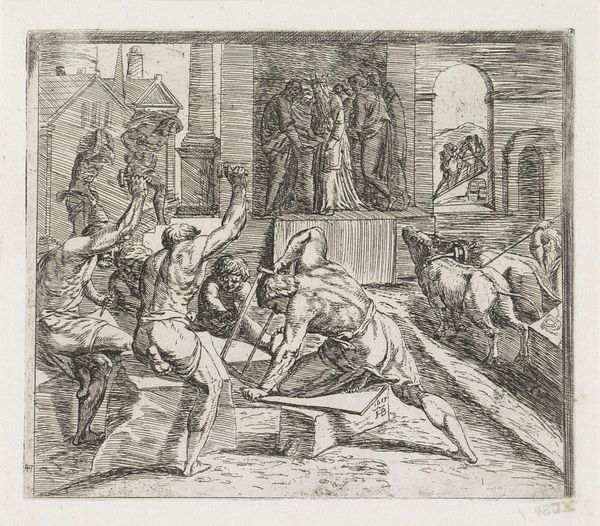
The Philistines Place the Ark of the Covenant in the Temple of Dagon 1535 - 1545
0:00
0:00
drawing, print, engraving
#
drawing
# print
#
figuration
#
history-painting
#
italian-renaissance
#
engraving
Dimensions: sheet: 10 1/2 x 16 1/4 in. (26.7 x 41.2 cm) trimmed to platemark
Copyright: Public Domain
Editor: Here we have Battista Franco’s engraving, "The Philistines Place the Ark of the Covenant in the Temple of Dagon," created sometime between 1535 and 1545. There’s so much chaotic energy here – bodies falling, people gesturing wildly. I'm curious, what specific symbols stand out to you in this work? Curator: The very act of placing the Ark, a potent symbol of divine power for the Israelites, within the temple of Dagon, a Philistine deity, is a clash of civilizations and belief systems. Look at the figures struck down. What does the pose and the light emitting above the Ark signify to you? Editor: It seems to represent divine wrath, a rejection of the Philistines' attempt to subjugate this sacred object. It’s almost a theatrical representation of the consequences. Is that a common theme? Curator: Theatrics, yes! The Italian Renaissance was preoccupied with the drama of history, imbuing scenes with emotional weight. Here, the broken idol of Dagon lying next to the fallen figures points to the overarching theme of the story: the ultimate triumph of one faith over another. Notice too the way Franco uses light and shadow. Where is it concentrated and why? Editor: It's brightest above the Ark, drawing your eye to it, further emphasizing its significance. So the scene isn't just a historical depiction but a study of power dynamics represented through symbolic imagery. Curator: Precisely. Consider, then, what this image, disseminated as a print, might have meant to its 16th-century audience – a reinforcement of faith, a warning against idolatry, or perhaps even a commentary on contemporary political power struggles? Editor: It’s incredible how a single image can hold so many layers of meaning and reflect the anxieties of an era. I never considered that prints could be such powerful tools for cultural messaging. Curator: Indeed. It's a testament to the enduring power of visual storytelling and symbolic representation.
Comments
No comments
Be the first to comment and join the conversation on the ultimate creative platform.

